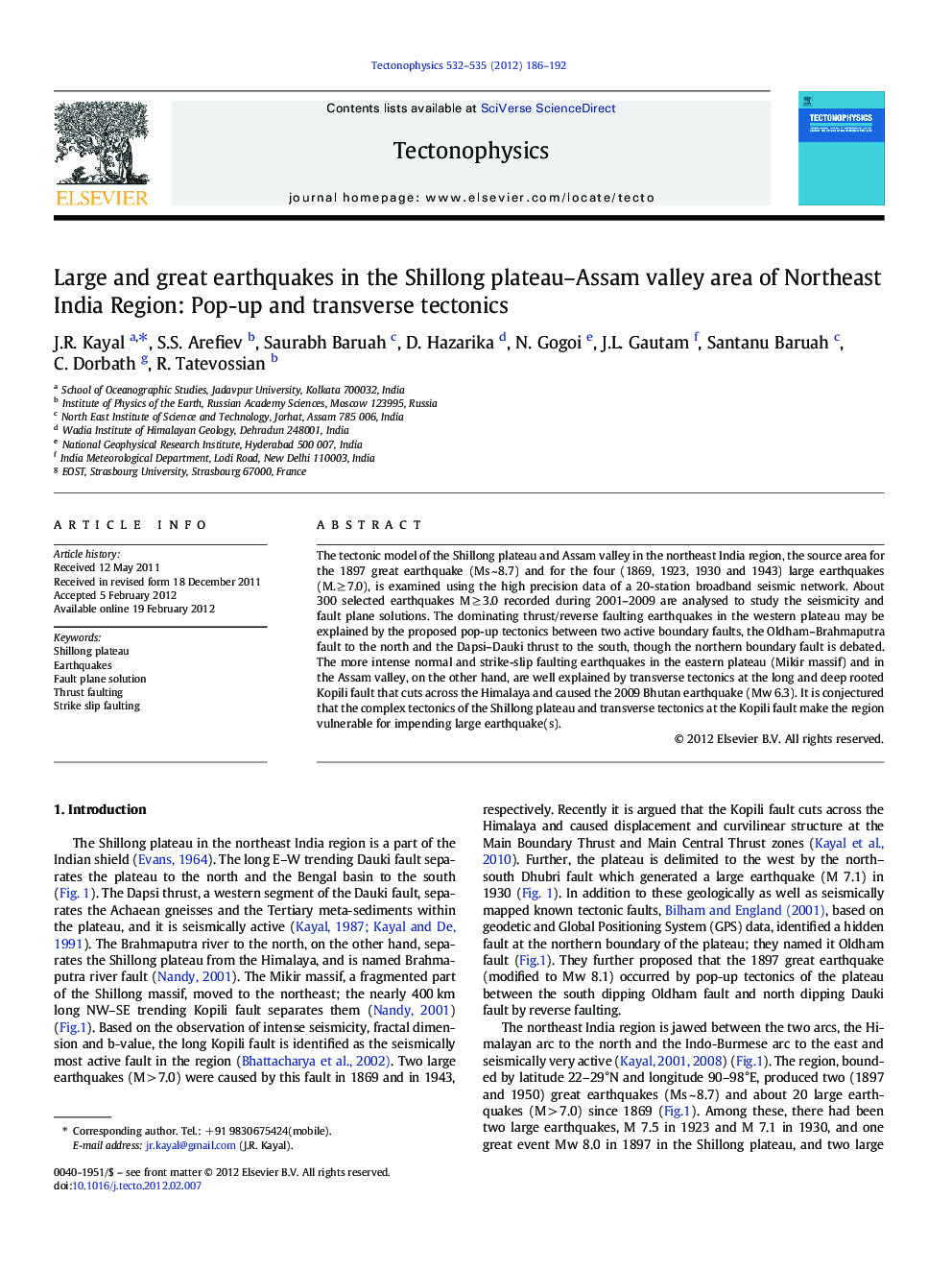| Article ID | Journal | Published Year | Pages | File Type |
|---|---|---|---|---|
| 4692861 | Tectonophysics | 2012 | 7 Pages |
The tectonic model of the Shillong plateau and Assam valley in the northeast India region, the source area for the 1897 great earthquake (Ms ~ 8.7) and for the four (1869, 1923, 1930 and 1943) large earthquakes (M. ≥ 7.0), is examined using the high precision data of a 20-station broadband seismic network. About 300 selected earthquakes M ≥ 3.0 recorded during 2001–2009 are analysed to study the seismicity and fault plane solutions. The dominating thrust/reverse faulting earthquakes in the western plateau may be explained by the proposed pop-up tectonics between two active boundary faults, the Oldham–Brahmaputra fault to the north and the Dapsi–Dauki thrust to the south, though the northern boundary fault is debated. The more intense normal and strike-slip faulting earthquakes in the eastern plateau (Mikir massif) and in the Assam valley, on the other hand, are well explained by transverse tectonics at the long and deep rooted Kopili fault that cuts across the Himalaya and caused the 2009 Bhutan earthquake (Mw 6.3). It is conjectured that the complex tectonics of the Shillong plateau and transverse tectonics at the Kopili fault make the region vulnerable for impending large earthquake(s).
► The Shillong seismicity is attributed to pop-up and the Assam valley to transverse tectonics. ► Active reverse faults are identified for the pop-up tectonics of the Shillong plateau. ► A long strike fault is identified for the transverse tectonics in the Assam valley. ► The strike slip transverse structure extends to the Bhutan Himalaya.
